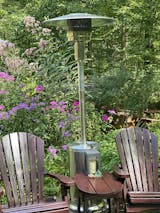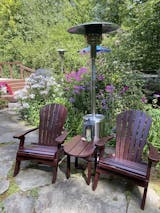
Maximizing Your Sump Pump’s Efficiency: A Complete Guide to Sump Pump Controllers
30 March 2025
Share
In many homes, basements or low-lying areas are vulnerable to flooding, especially during heavy rainfall. A sump pump is a crucial device in preventing water damage by pumping out excess water from these areas. The sump pump controller is an essential component of this system, ensuring that the pump operates efficiently. In this blog, we’ll dive into the workings of sump pump controllers, the different types, installation processes, selection tips, and maintenance strategies to help you understand and optimize the use of this important device.
What is a Sump Pump Controller?
A sump pump controller is a device that works alongside a sump pump to monitor and control the pump's operation. The controller typically includes components like water level sensors, float switches, or pressure switches, which detect the water level and automatically turn the sump pump on or off. This system helps prevent water accumulation in basements or other low-lying areas, ensuring water is pumped out before it can cause significant damage.
Key Functions of a Sump Pump Controller:
- Automatic Operation: It automatically detects the water level and turns the pump on or off, reducing manual intervention.
- Overload Protection: Protects the pump from damage in case of malfunction or excessive load.
- Alarm Feature: Some controllers come with an alarm system that alerts you to pump failure or abnormal water levels.
- Energy Efficiency: Ensures the pump runs only when necessary, helping to save energy and reduce wear and tear.
Types of Sump Pump Controllers
There are various types of sump pump controllers based on their application and technical features. Here are the most common ones:
- Float Switch Controllers: The most common type of sump pump controller, using a float switch to detect the water level. As the water level rises, the float switch is triggered, turning the pump on. When the water level falls, the float switch drops and the pump is turned off.
- Pressure Switch Controllers: Pressure switch controllers use the changes in pressure at the pump’s intake to control the pump’s operation. These controllers are often more sensitive to water level changes, making them suitable for precise applications.
- Smart Controllers: Smart sump pump controllers come with Wi-Fi or Bluetooth connectivity, allowing you to monitor and operate the system remotely through a smartphone app. These controllers often integrate with smart home systems, offering more convenience.
- Backup Controllers: Backup controllers are designed for homes with backup power sources, such as batteries or generators. These controllers ensure that the sump pump keeps working during power outages, providing continuous protection.
Installation of Sump Pump Controllers
Proper installation of a sump pump controller is crucial for ensuring its effective operation. The typical installation process includes the following steps:
- Choosing the Right Location: The controller should be installed between the pump’s power supply and the water pipe, and it should be connected to the water level sensor. The location should not be subject to vibrations or excessive moisture that could interfere with the device’s function.
- Wiring the Power Supply: Connect the sump pump controller to the power system, ensuring that the electrical connections are secure and meet safety standards.
- Installing the Water Level Sensor: For a float switch controller, the float switch needs to be securely positioned so that it can accurately detect water level changes. For pressure switch controllers, the pressure sensor must be installed at the pump’s intake.
- Testing and Calibration: After installation, you must test the system to ensure the controller correctly responds to changes in water levels and effectively controls the pump’s operation.

Maintaining Your Sump Pump Controller
Proper maintenance is essential for ensuring the sump pump controller operates effectively over time. Here are some common maintenance tips:
- Regularly Check Water Level Sensors: Make sure the float switch or pressure sensor is not clogged or damaged, ensuring accurate water level detection.
- Clean and Inspect the Battery: For controllers with a backup battery, periodically check the battery’s charge and replace it if necessary.
- Inspect Electrical Connections: Ensure all wiring and electrical connections are tight and free from corrosion to avoid malfunctions.
- Test the Alarm System: Regularly test the controller’s alarm system to ensure it will sound off in case of pump failure or unusual water levels.
- Prevent Moisture Damage: Ensure the controller is installed in a dry location, away from direct water contact, to avoid damage from moisture.
Conclusion
A sump pump controller is a vital component of any sump pump system, ensuring that your pump operates effectively to protect your basement or low-lying areas from water damage. By understanding its functions, types, and how to install, select, and maintain a controller, you can make an informed decision to safeguard your property. Whether you're installing a new system or upgrading an existing one, choosing the right sump pump controller is key to ensuring efficient and reliable flood protection.
Next post

Ortis Automatic Vacuum Switch: The Ultimate Tool for Efficiency and Safety
Updated on 05 March 2025













